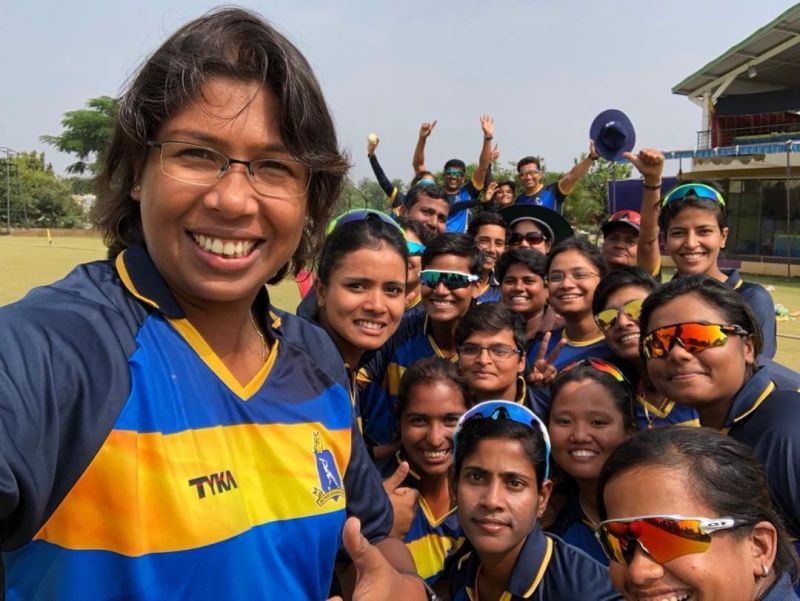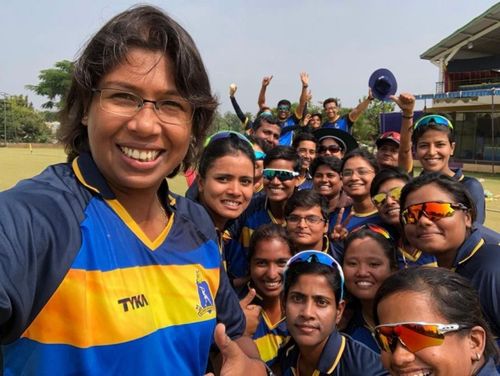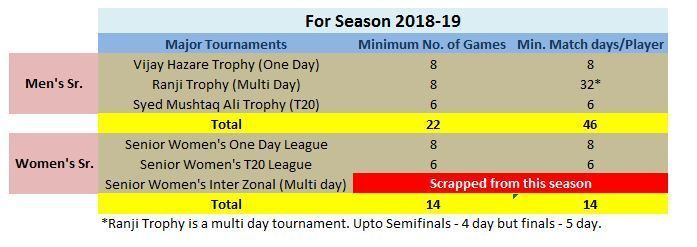
The frustrations of being a senior woman cricketer in India
Relying completely on the domestic fixture released by the governing body of cricket in India, senior women cricket is the loosely plugged hole of the lot. Despite playing for the richest cricket board in the world and still struggling for getting enough exposure to call herself a professional cricketer, senior women players are the most affected by the latest reforms introduced by the BCCI in the domestic circuit.
There are countless examples of players who have been playing for their states for over a decade now, yet they haven't touched a minute milestone of 50 games, eventually which exposes the seriousness of administration towards the women's domestic circuit. Any naysayers may jump in the debate and can boast on the recent developments proposed by the BCCI for the upliftment of women's cricket, but reality says something else.
For example, a senior woman cricket player who is well past of her 23 years of age put a serious amount of thought about going forward into the next phase of her career when she gears up for a fresh season. It's not the age to worry about, but it's the opportunity.
Do the latest BCCI reforms in the domestic calendar have sufficient match days for them? Or the number of tournaments BCCI have proposed are adequate enough to entice them to play long enough?

The BCCI has brought to the fore some exciting tournaments this season for the women across various age categories. Where Under-23 and Under-19 are the most benefited among all the age groups, separate Challenger Trophies in the T20 and One-Dayers, and a T20 league is the latest addition to the existing tournament list. After all, with so many tournaments to play in a year the structure look rock-solid for these categories.
However, for the Senior Women, BCCI played second fiddle. It scrapped a well established Inter-Zonal three-day tournament, instead introduced a brand-new T20 Challenger Trophy, which eventually left senior women with only two tournaments to play in one season: Senior Women's One Day and T20 League.
Such a pivotal decision may have taken by the BCCI in the wake of the rapid rise of the shorter format of cricket around the world. But, it hit the senior women cricketers to the core as they now have only two big tournaments to play. Effectively 14 match days if the team doesn't advance to the knockouts. That is too low for a professional cricketer.
In a candid conversation over women’s cricket with the former Saurashtra’s women team captain Mridula Jadeja, she was found to be a little critical about the latest reforms in the domestic cricket. Increase in the number of games is a plus, but a limited exposure is a minus. BCCI shall best use its resources where there is more competition, i.e. at U-23 and Senior level, she added.
Earlier, the situation was even more dire for senior players, a big thank to the introduction of nine new teams into the domestic cricket which assisted in getting more game-days.
Irrespective of more games or a new T20 Challenger Trophy, Inter-Zonal was the key-tournament for senior players, where around 75 players from 5 zones used to play with the best in the region. But, T20 Challenger Trophy has confined this number to approximately 39 players. A substantial decrease.

The table clearly states that a senior women player gets a much lesser number of playing days than its male counterpart per season. The comparison drew only contains the minimum no. of games a team gets to play in the group stage. For a player, it could go even lower if she/he isn't able to get playing XI.

This table gives a detailed explanation of what happens if a senior player features in maximum no. of games he/she could per season. The number is still far lower than the minimum number of match days for a male player, i.e., 46 days.
A senior female/male player can get the maximum number of playing days in only one situation that is if her/his team wins all group and knock out games of all the tournaments dedicated to the respective category, which is unlikely to happen for a majority of the participating players. So, at the end of the day, however talented the player is, the chances of him/her featuring in all the games depend majorly on how the team plays.
According to the table, a senior male player can get the maximum 40 games per season and 87 match days at max whereas a female player merely gets 30 game days at the very most. The inequality is something India's cricket board should seriously look into.
Being the guardian of cricket in India, BCCI shall need to dig deeper into the problems of over a 23-years of senior women cricket player. Unlike their male counterparts, they do not have the luxury to participate in corporate tournaments once the season got over. 14 days per season will never be enough, neither for their financial survival nor for a professional career.
A minor modification in the existing tournament or finding space for the introduction of a new or revival of an old competition, BCCI have in its power to do everything to make these girls believe in looking forward to something and make the sport in general, a much more inclusive engagement for the people of the country.